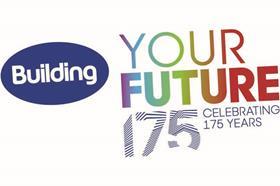Technology in the legal world has opened up a host of opportunities. Rebecca Shorter looks at new ways of making the most of digital evidence in construction cases and the risks to be aware of when there is such a vast amount of data at your fingertips


The construction industry has always been document-heavy. The advent of the computer was supposed to make our lives easier (remember the prediction of the paperless office?) but what it has actually done is spawn a proliferation of documents and a level of information that would have been unrecognisable to a project manager only 30 years ago.
While technology has greatly advanced how construction and engineering are approached, the changes to the volume and types of documentary evidence available in the event of a dispute have presented a challenge to lawyers specialising in the field. Yet the legal sector is catching up and there are now a number of ways in which technology is being used to make the most of the evidence available. Here are some of the tools you need to know about.
Changes to the volume and types of documentary evidence available have presented a challenge to lawyers
Disclosure
It is in disclosure (the production of documents relevant to the dispute in one party’s possession to the other) that perhaps the most technological changes have taken place over recent years. Just 10 or 15 years ago this meant a team of paralegals manually checking boxes of documents in windowless offices or dusty site cabins for weeks on end. However, the advent of email and other electronic-only documents has led to businesses providing e-disclosure platforms – software that can collate, de-duplicate data, and search your electronic documents, allowing users to tag documents as “privileged”, or look for specific terms or authors, or periods of time.
Most recently, the mainstream adoption of predictive coding in e-disclosure (the disclosure of electronic documents such as emails, text messages, databases and so on) has had a major impact on how disclosure is managed. Very simply put, predictive coding software “learns” the types of documents that you are looking for through the automated use of keyword searches, filtering and sampling, reducing the need for manual checking by humans. The use of predictive coding has been judicially approved; see Pyrrho Investments vs MWB Property (2016) EWHC 256 (Ch).
Be aware that e-disclosure platforms also allow for searches of metadata – data that provides information about other data – including, for example, when and how an electronic document has been modified and by whom.
This can lead to some interesting discoveries and be a gamechanger in a dispute – for example, see the case of BSkyB vs HP Enterprises (2010) EWHC 86 (TCC), where fraudulent misrepresentations were found to have been made, in part due to metadata showing that documents had been altered.
Finally, during disclosure, parties should not forget the plethora of electronic-only design evidence that may be of significant relevance to the dispute: for example, native versions of BIM, CAD or structural modelling.
Computer modelled claims
Claims for disruption to a project are generally accepted to be difficult, evidentially, to establish. System dynamics (a mathematical modelling technique for the assessment of complex issues) has begun to be used in construction project disruption claims.
System dynamics software can be used to create a model of a project, and then to demonstrate the impact on that model of different disruptive events. Although still relatively uncommon compared with, say, a measured mile analysis, this is one to watch for the future of disruption claims.
Picture this
A perennial challenge to construction lawyers is how best to present a complex and detailed issue in an easy-to-understand format. In recent years a trend has emerged for producing interactive demonstratives – perhaps 3D graphics recreating the progress of (and delays and disruption to) works, or a defect deteriorating over time until a failure occurs. These types of tools will only ever be as good as the contemporaneous data they are based on, so care must be taken to use complete and non-contested information, otherwise it will be easy to discredit the product. Subject to this, these products can be a powerful tool in case presentation.
Submissions and hearings
On the largest cases, the volume of evidence can easily reach a level that makes the traditional production of hard copy bundles impracticable. Increasingly common in both litigation and arbitration is the partial or complete use of electronic bundles, which may include hyperlinked cross-references to exhibits or other documents in footnotes. The Technology and Construction Court and the International Dispute Resolution Centre in London are equipped to handle cases like this.
What’s next?
The extent to which parties may wish to or be able to adopt any of the methods above will depend on their case, its value and its forum. Parties will also be influenced by who is determining the dispute – some judges, arbitrators and adjudicators are more tech-savvy than others. What’s clear is that the development and application of these tools will only continue to increase over the next 25 years.
Postscript
Rebecca Shorter is a partner in the London construction and engineering group at White & Case



























No comments yet